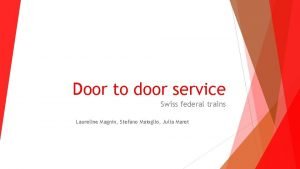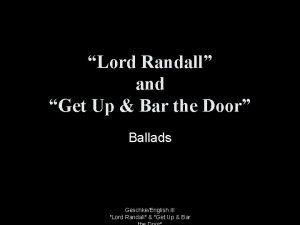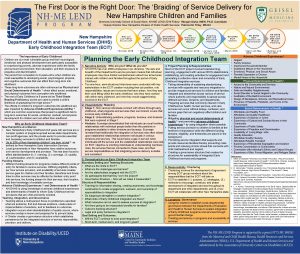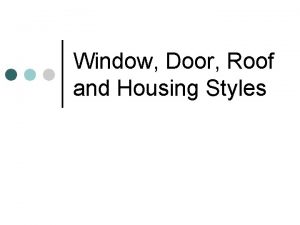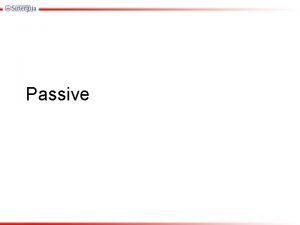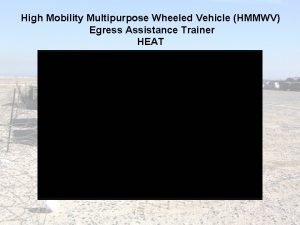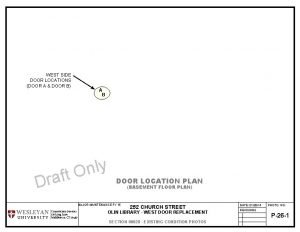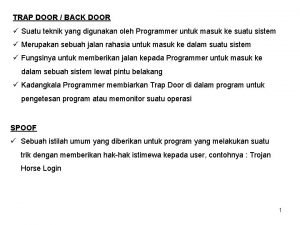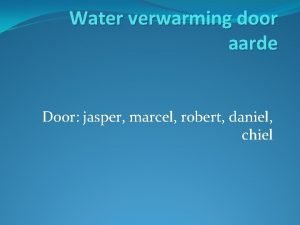DOOR i ii it is defined as an




































- Slides: 36


� DOOR� i. ii. � it is defined as an openable barrier in an opening left in a wall for access of users. It consist of 2 parts. Frame Shutter Window- it is defined as an opening made in wall for purpose of providing day light, vision and ventilation.

Important consideration for doors and windows main function of door is to connect link between various internal parts. � Number of doors should be kept minimum � Size of door - the door should allow movement of largest object likely to use the door. -Minimum width of interior door for public buildings( hospitals, library)=800 mm, 1 m and 1. 2 m � The

Important consideration for doors and windows � Size of door - Height = width+1 m to 1. 2 m - width= 0. 4 to 0. 6 of height � Size of window - depends on dimension , use , location of room, speed of wind, obstruction of light by trees, buildings near by, relative humidity, climatic conditions.

Important consideration for doors and windows � Breadth of window=1/8( width of room+height of room) � For 30 m 3 room, atleast 1 m 2 window opening is there. � Total area of window opening=(15% of floor area of room) � Total area of glass panels=(10% of floor area of room)

Important consideration for doors and windows � Location -doors should be preferably located at corner of room - Sill of window opening at a height of 700 mm to 800 mm from floor level - Factors affecting light distribution, ventilation, wind direction should be considered





Technical terms � Style-outside vertical member of the shutter or door � Top rail- topmost horizontal member of the shutter � Lock rail- middle horizontal member of shutter where locking arrangement is made � Bottom rail-lowermost horizontal member of shutter. � Cross rail or intermediate rail-additional horizontal rails fixed between top and bottom rails � Panel-area of shutter enclosed between adjacent rails

� Holdflast-it is mild steel flat bar of 200 mm length x 30 mmx 6 mm. 3 nos of hold fast are provided on each side of door. � Horn-horizontal projection of head or sill beyond face of frame. � Shutter-entire assembly of styles, panels and rails. � Sash-speccial type of frame made of light sections designed to carry glass. � Mullion-vertical member to divide a window or door vertically

� Transom-Horizontal member to subdivide window horizontally � Louver- piece of timber fixed at inclined position within a frame � Jamb- vertical wall face of an opening which supports frame of a door or window � Reveal-external jamb of door or window right angle to wall face � Rebate-depression inside door frame to receive shutter � Putty- mixture of linseedoil and whiting chalk, used to fix glass panels


Types of doors § § § § Ledged doors Ledged and braced doors Ledged and framed doors Ledged framed and braced doors Framed and panelled doors Glazed or sash doors Flush doors Louvered doors Collapsible steel doors Revolving doors Rolling steel doors Sliding doors Swing doors

LEDGED DOORS

LEDGED DOORS � Battens are 100 mm to 150 mm wide and 20 mm to 30 mm thick � Ledges are 100 to 200 mm wide and 30 mm thick � 3 ledges are there- top, middle and bottom � Battens are secured to shutter by T hinges

Ledged and braced doors

� Braces are 100 to 150 mm wide and 30 mm thick � Braces give rigidity to door, hence useful for wide openings.

Ledged and framed doors � More durable and strong � Styles are 100 to 40 mm thick

� More durable and strong

Framed and panelled door and glazed door

Framed and panelled door � Most usual variety of door � It reduces tendency of shrinkage and presents a decent apperance � Styles are continous from top to bottom � Mullions are joined to rails � Thickness of shutter=30 mm to 40 mm � Thickness of panels=20 mm

Glazed or sash doors � To admit more light, fully glazed or partly panelled and partly glazed doors are used � Use of glazed portion to panelled portion=2: 1 � Glass is received into rebates in wooden sash bars, secured by nails and putty

Flush doors

� Consist of a frame work of rails and styles and is covered with plywood � Framed flush door consist of styles, rails, horizontal ribs, vertical ribs and plywood � Laminated flush door consist of styles, rails, laminated core and plywood

Flush door consideration � Timber should be properly seasoned � Termite proof treatment should be given to timber work � Heated and pressed in hot press

Louvered doors � Shutters are provided with louvers � Louvers are arranged in such a way that horizontal vision is obstructed. � It allows free passage of air.

Collapsible steel doors Consist of mild steel frame � 2 vertical mild steel channels 15 mm to 20 mm wide are joined together with hollow portion of channel 12 mm to 15 mm gap created. � Such pieces spaced at 120 mm centre to centre � Rollers are provided at top and bottom � No hinges � Used in compound gates, sheds, godowns, works hops, schools, residential buildings. �

Revolving doors Consist of centrally placed mullion or pivot in circular opening � Revolving leaves are radially attached to pivot � Shutters are glazed, fullu panelled or partly glazed � Central pivot is ball bearing � At the rubbing ends vertical rubber pieces are provided � It is useful for buildings with heavy rush. �


Rolling steel doors

� It consist of frame, drum, shutter of thin plates(thickness=1 mm) � Grooves of 25 mm thickness left in frame � Diameter of drum= 200 mm to 300 mm � Provided for garages, show rooms, shops, godowns, factories etc.

Sliding doors

� Shutters with one or several leaves slide either � Doesnot cause obstruction during movement , used in entrances of godowns, sheds, sho ps etc

Swing door � Special hinges with double action spring is provided � Door is closed in position when not in use.
 Direct energy door to door
Direct energy door to door Door to door luggage service switzerland
Door to door luggage service switzerland Collection of well defined objects
Collection of well defined objects Conflict of get up and bar the door
Conflict of get up and bar the door Tree with door
Tree with door How did dollar diplomacy protect the open door policy
How did dollar diplomacy protect the open door policy Vaporets
Vaporets First door on the right
First door on the right Refrigerator part names
Refrigerator part names Teachers open the door
Teachers open the door Ffa pledge
Ffa pledge Analogue door phone
Analogue door phone What was the inscription on the iron door of auschwitz
What was the inscription on the iron door of auschwitz Fireplace architectural symbol
Fireplace architectural symbol James bond door de jaren heen
James bond door de jaren heen If god closes a door he opens a window
If god closes a door he opens a window Automatic door sheffield
Automatic door sheffield Stieros uit spanjos
Stieros uit spanjos Jalousie door
Jalousie door Clifford sifton open door policy
Clifford sifton open door policy Door in the face phenomenon
Door in the face phenomenon Anastasia sat by the fountain
Anastasia sat by the fountain Haas door override setting
Haas door override setting The wind yells while blowing
The wind yells while blowing The bear next door
The bear next door Door repair services edmonton
Door repair services edmonton Fuck smash door
Fuck smash door He opened the door passive voice
He opened the door passive voice The red door iain crichton smith quotes
The red door iain crichton smith quotes Language
Language Koolzuurassimilatie door groene planten
Koolzuurassimilatie door groene planten Foot in the door phenomenon
Foot in the door phenomenon Roosevelt corollary
Roosevelt corollary The magic door game
The magic door game Your passenger jammed his finger in the door of your m1114
Your passenger jammed his finger in the door of your m1114 Her-holy-door
Her-holy-door Built rite specials
Built rite specials

